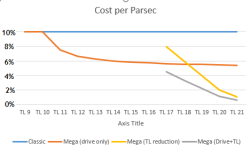mike wightman
SOC-14 10K
If pumps can move fuel from drop tank to jump engine or from demountable tanks to jump engine then there is no reason said pumps can not manage to move the fuel from a tanker.
And it is not water, it is liquid hydrogen.
And it is not water, it is liquid hydrogen.

